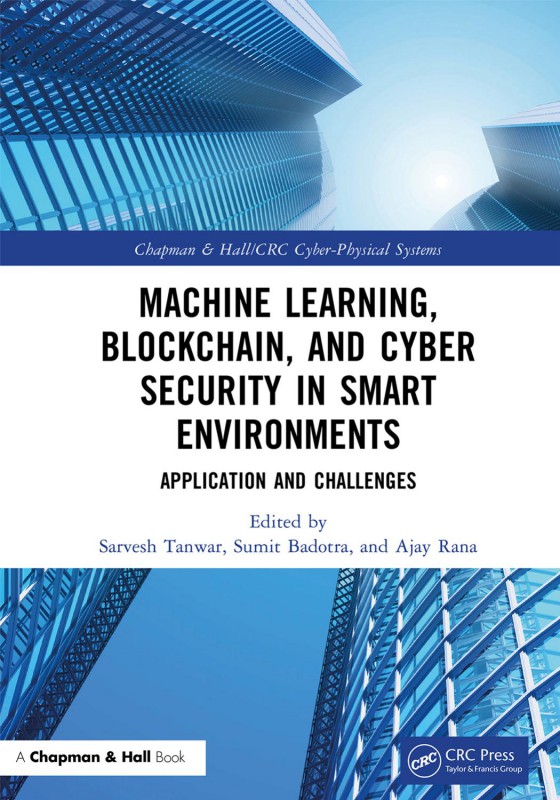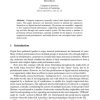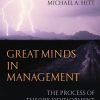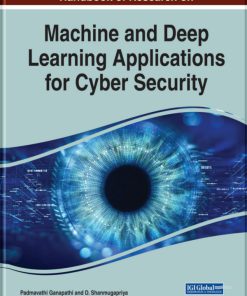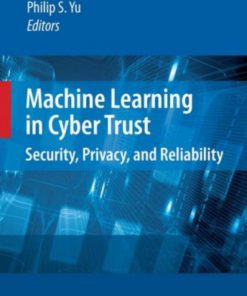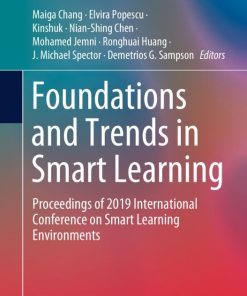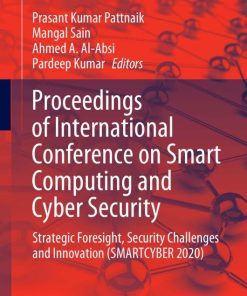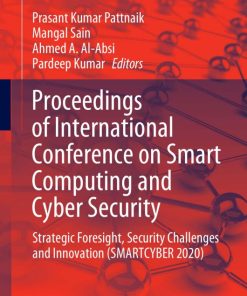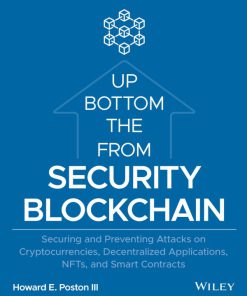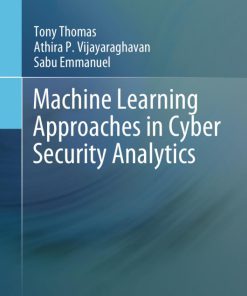Machine Learning Blockchain and Cyber Security in Smart Environments, Applications and Challenges 1st edition by Sarvesh Tanwar, Sumit Badotra, Ajay Rana 1000623912 9781000623918
$50.00 Original price was: $50.00.$25.00Current price is: $25.00.
Authors:Sarvesh Tanwar; Sumit Badotra; Ajay Rana , Series:Cyber Security [425] , Tags:Artificial Intelligence; Neural Network; Cryptocurrency; Cyber Physical System; Privacy; Supply Chain , Author sort:Tanwar, Sarvesh & Badotra, Sumit & Rana, Ajay , Languages:Languages:eng , Published:Published:Jul 2022 , Publisher:CRC Press , Comments:Comments:This book provides a deep insight into the recent techniques which form the backbone of smart environment and addresses the vulnerabilities that cause hindrance for the real-world implementation. It focuses on the benefits related to the emerging applications such as machine learning, blockchain and cyber security.
Machine Learning, Blockchain, and Cyber Security in Smart Environments; Applications and Challenges 1st edition by Sarvesh Tanwar, Sumit Badotra, Ajay Rana – Ebook PDF Instant Download/DeliveryISBN: 1000623912, 9781000623918
Full download Machine Learning, Blockchain, and Cyber Security in Smart Environments; Applications and Challenges 1st edition after payment.
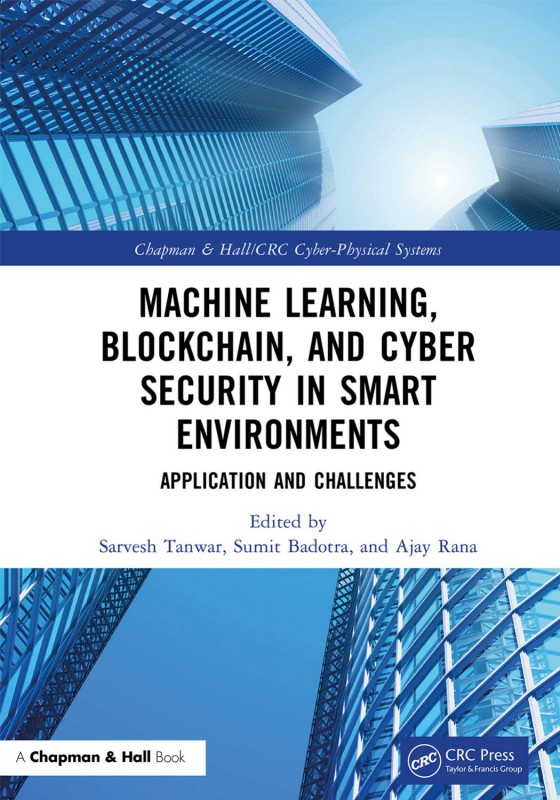
Product details:
ISBN-10 : 1000623912
ISBN-13 : 9781000623918
Author : Sarvesh Tanwar, Sumit Badotra, Ajay Rana
Machine Learning, Cyber Security, and Blockchain in Smart Environment: Application and Challenges provides far-reaching insights into the recent techniques forming the backbone of smart environments, and addresses the vulnerabilities that give rise to the challenges in real-word implementation. The book focuses on the benefits related to the emerging applications such as machine learning, blockchain and cyber security. Key Features: Introduces the latest trends in the fields of machine learning, blockchain and cyber security Discusses the fundamentals, challenges and architectural overviews with concepts Explores recent advancements in machine learning, blockchain, and cyber security Examines recent trends in emerging technologies This book is primarily aimed at graduates, researchers, and professionals working in the areas of machine learning, blockchain, and cyber security.
Machine Learning, Blockchain, and Cyber Security in Smart Environments; Applications and Challenges 1st Table of contents:
1 Intelligent Green Internet of Things: An Investigation
1.1 Introduction
1.2 Green IoT
1.3 Related Surveys
1.4 IoT Layered Architecture
1.4.1 Perception Layer
1.4.2 Transport Layer
1.4.3 Processing/Middleware Layer
1.4.4 Network Layer
1.4.5 Application Layer
1.5 Applications
1.5.1 IoT in Industry
1.5.2 IoT for the Smart Home
1.5.3 IoT for Agriculture
1.5.4 IoT in Healthcare
1.5.5 IoT in Transport
1.5.6 IoT in Environment and Safety
1.5.7 IoT in Energy Applications
1.5.8 IoT in Education
1.5.9 IoT in Law Enforcement
1.5.10 IoT in the Prediction of Natural Disasters
1.5.11 IoT in Consumer Applications
1.6 IoT Protocols
1.7 Limitations and Future Research Directions
1.8 Issues in Energy Conservation
1.8.1 Idle Listening
1.8.2 Collision
1.8.3 Overhearing
1.8.4 Reduction of Protocol Overheads
1.8.5 Traffic Fluctuations
1.9 Energy Preservation Approaches
1.9.1 Node Activity Management
1.9.2 Data Aggregation and Transmission Process
1.9.3 MAC Protocol
1.9.4 Security Management
1.9.5 Routing
1.10 Conclusion
References
2 The Role of Artificial Intelligence in the Education Sector: Possibilities and Challenges
2.1 Introduction
2.2 Background to the Study
2.2.1 History of AI
2.2.2 AI in Education
2.2.3 Applications of AI
2.2.4 Visions and Challenges of AIED
2.2.5 EdTech Start-Ups
2.2.6 Education during Covid-19
2.3 Literature Survey
2.4 Findings and Discussion
2.5 Conclusion
2.6 Future Work
Note
References
3 Multidisciplinary Applications of Machine Learning
3.1 Introduction
3.2 Machine Learning: A Prolific Concept to Make Machines Learn
3.2.1 Machine Learning: Workflow
3.2.2 Prominent Features of Machine Learning
3.2.3 A Strong Understanding of Machine Learning
3.2.4 Machine Learning: A Tool Needed at the Right Time
3.3 Classifications of Machine Learning
3.3.1 Supervised Learning
3.3.2 Unsupervised Learning
3.3.3 Reinforcement Learning
3.4 Machine Learning in the Modern Era of Computing
3.5 Application of Machine Learning and Its Relation to Other Fields
3.5.1 Applying Machine Learning to Agriculture
3.5.2 Application of Machine Learning in a Smart HealthCare System for the Elderly in Pandemic Conditions
3.6 An Overview of Artificial Intelligence and Deep Learning
3.6.1 Artificial Intelligence
3.6.2 Deep Learning
3.7 Conclusion
References
4 Prediction of Diabetics in the Early Stages Using Machine-Learning Tools and Microsoft Azure AI Services
4.1 Introduction
4.1.1 Risk Factors for Diabetes
4.2 Dataset Collection
4.3 Tools Used for Prediction
4.3.1 Orange
4.3.2 RapidMiner
4.3.3 Microsoft Azure
4.4 Data Cleansing
4.4.1 Normalization
4.4.2 Missing Data
4.5 Dataset Visualization
4.5.1 Bar Plot (Gender)
4.5.2 Bar Plot (HbA1c)
4.5.3 3D Scatter Plot (HbA1c)
4.5.4 Bell Curve
4.6 KNN Implementation
4.7 Random Forest Implementation
4.8 Microsoft Azure Implementation
4.9 Comparison of RapidMiner and Microsoft Azure
4.10 Conclusion and Future Scope
References
5 Advanced Agricultural Systems: Identification, Crop Yields and Recommendations Using Image-Processing Techniques and Machine-Learning Algorithms
5.1 Introduction
5.2 Literature Survey
5.3 Proposed Machine-Learning System
5.4 Dataset
5.4.1 Data Pre-Processing
5.4.2 Train-Test Split
5.4.3 Creating the Classifier Model Using VGG-19
5.4.4 Evaluating the Model
5.5 Confusion Matrix
5.5.1 VGG-19 Model Confusion Matrix
5.5.2 Train-Test and Validation Loss
5.6 Classification Algorithm
5.6.1 XG-boost
5.6.2 Decision Tree
5.6.3 Random Forest Classifier
5.6.4 Naive Bayes Classifier
5.6.5 Support Vector Machine
5.7 Conclusion
References
6 SP-IMLA: Stroke Prediction Using an Integrated Machine-Learning Approach
6.1 Introduction
6.1.1 Traditional Risk Factors for Stroke
6.1.2 Stroke Prevention
6.2 Problem Statement
6.3 Motivation
6.4 Objectives of the Study
6.5 Review of Relevant Literature
6.6 Methodology
6.7 Technology Used
6.8 Algorithms/Techniques
6.8.1 K-Means
6.8.2 Logistic Regression
6.9 Conclusion and Future Work
References
7 Multi-Modal Medical Image Fusion Using Laplacian Re-Decomposition
7.1 Introduction
7.2 Related Work
7.3 Proposed Methodology
7.3.1 The Convolutional Neural Network
7.3.2 Pyramid Decomposition
7.3.3 Gaussian Pyramid
7.3.4 Laplacian Pyramid (LP)
7.4 Fusion Method
7.5 Results
7.6 Conclusion
References
8 Blockchain Technology-Enabled Healthcare IoT to Increase Security and Privacy Using Fog Computing
8.1 Introduction
8.2 Blockchain with Healthcare IoT and Ethereum
8.2.1 Distributed Ledger Technologies and Blockchain
8.2.2 Limitations of Blockchain
8.3 Supply-Chain Management in Healthcare: Blockchain Technology
8.3.1 Supply-Chain Management (SCM)
8.3.2 Healthcare Supply-Chain Management
8.3.3 Pharmaceutical Supply-Chain Management
8.3.4 Blockchain-Based Healthcare Companies
8.4 Genomic Data
8.4.1 Empowering Genomic Blockchain Technology
8.4.2 Challenges of Genomics Big-Data Platforms
8.4.3 Genomic Data Platform Architecture
8.4.4 Case Study of Genomic Data Sharing in LifeCODE.ai
8.4.5 Genomic Blockchain Technology
8.4.6 Blockchain-Based Clinical Data Sharing FHIRChain
8.5 Conclusion
Notes
References
9 Blockchain in Healthcare, Supply-Chain Management, and Government Policies
9.1 Introduction
9.2 Blockchain in Healthcare
9.2.1 Electronic Medical Record Management
9.2.2 Remote Patient Monitoring
9.2.3 Medical Supply Chain Management
9.2.4 Medical Insurance Claims Management
9.2.5 Healthcare Data Protection Management
9.3 Blockchain in Supply Chain Management
9.4 Blockchain in Government Policies
9.5 Conclusion
References
10 Electricity and Hardware Resource Consumption in Cryptocurrency Mining
10.1 Introduction
10.1.1 Bitcoin
10.1.2 How Bitcoin Works
10.1.3 Organization of the Chapter
10.2 Literature Survey
10.3 Methodology
10.4 Discussion
10.5 Advantages and Disadvantages of Mining Cryptocurrency
10.5.1 Advantages of Mining Cryptocurrency
10.5.2 Disadvantages of Cryptocurrency Mining
10.6 Conclusion
10.7 Future Scope
References
11 Cryptographic Hash Functions and Attack Complexity Analysis
11.1 Introduction
11.2 Brief Literature Review
11.3 Comparison of MD5 and SHA1 Based on Collision-Resistant Property
11.4 Analysis of Dictionary Attack
11.5 Observations
11.6 Password Storage Concepts: Salting
11.7 Statement of the Problem
11.8 Objectives of the Study
11.9 Results and Discussion
11.10 Analyzing the Complexity of Brute-Force Attacks
11.11 Conclusion and Future Work
References
12 Mixed Deep Learning and Statistical Approach to Network Anomaly Detection
12.1 Introduction
12.2 Network Anomaly Detection
12.3 Traditional Approaches to Network Anomaly Detection
12.4 Deep Learning Model Flow
12.5 Preparation of Dataset by Tapping Network Traffic
12.6 Analysis of Tapped Network Packets Using Wireshark
12.7 Feature Extraction from a .pcap File
12.8 Feature Selection
12.9 Extracting Features from Raw .pcap File
12.10 Statistical Analysis of Data Set
12.11 Statistical Anomaly Detection Using Joint Probability Approach
12.12 Multilayer Perceptron Model
12.13 Architecture of Multilayer Perceptron
12.14 Binary Classification of Labels Using PyTorch
12.15 Architecture of the Multilayer Perceptron Model for Anomaly Classification
12.16 Improving Model Accuracy Using Statistical Prediction of Anomalies
12.17 Training the Deep Learning Model Using PyTorch
12.18 Conclusion and Results
12.18.1 The Architecture of the Anomaly Detection Model
12.19 Future Work and Research Propagation
References
13 Intrusion Detection System Using Deep Learning Asymmetric Autoencoder (DLAA)
13.1 Introduction
13.2 Literature Survey
13.3 Methodology
13.3.1 Autoencoder
13.3.2 Convolutional Autoencoder
13.4 Proposed Method
13.4.1 Asymmetric Convolutional Self-Encoder
13.4.2 Deep Learning Asymmetric Autoencoder (DLAA)
13.5 Model Complexity and Timeliness
13.6 Experiment
13.7 Experimental Data
13.8 Data Preprocessing
13.8.1 Numerical Features
13.8.2 Normalization
13.9 Experimental Environment and Parameters
13.10 Evolutional Index
13.11 Simulation Experiments and Result Analysis
13.12 Conclusion and Future Work
People also search for Machine Learning, Blockchain, and Cyber Security in Smart Environments; Applications and Challenges 1st:
decentralized machine learning blockchain
ai machine learning blockchain
federated machine learning blockchain
machine learning blockchain
machine learning blockchain projects

